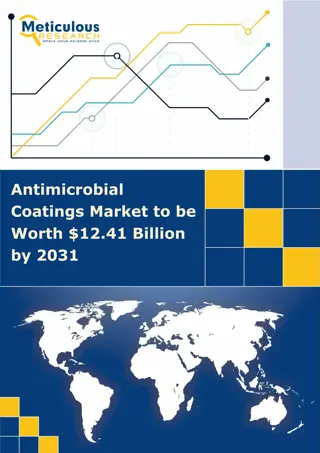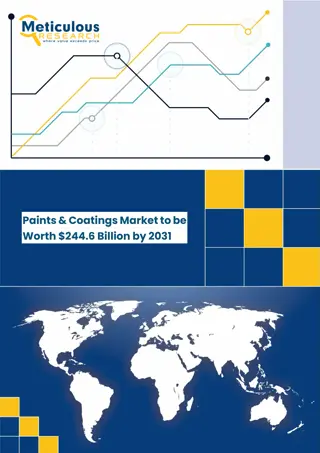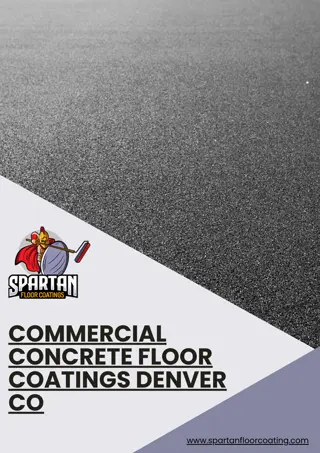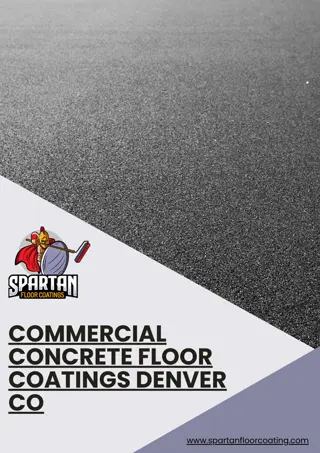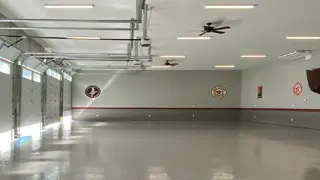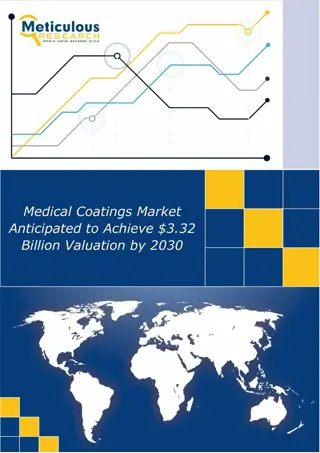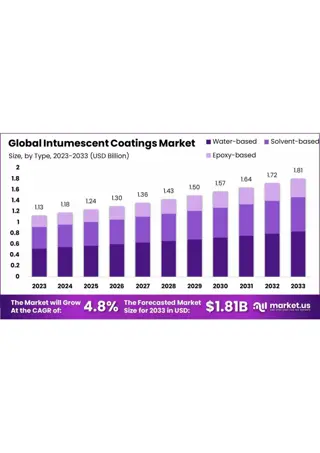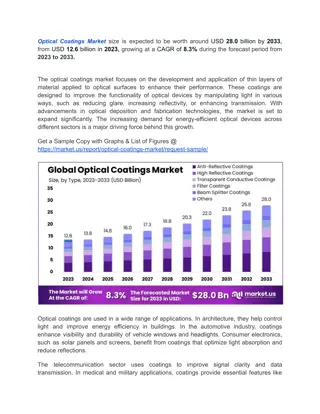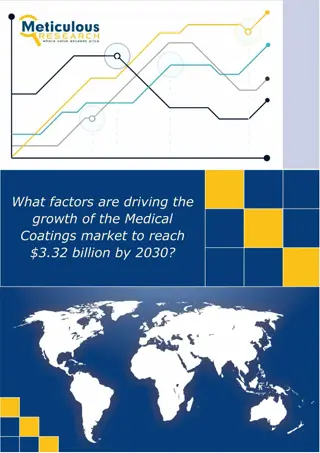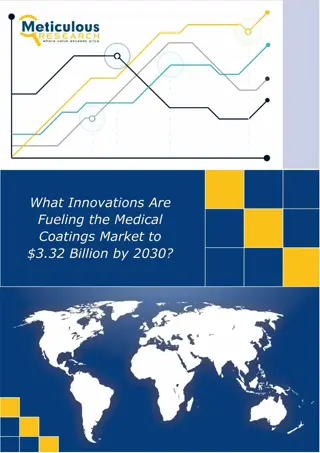
Anti-Reflective Coatings Market
The Anti-reflective Coatings Market size is expected to be worth around USD 9.9 billion by 2033, from USD 4.6 Bn in 2023, growing at a CAGR of 8% during the forecast period from 2023 to 2033.nClick here for request a sample: //market.us/report/a
Download Presentation

Please find below an Image/Link to download the presentation.
The content on the website is provided AS IS for your information and personal use only. It may not be sold, licensed, or shared on other websites without obtaining consent from the author. If you encounter any issues during the download, it is possible that the publisher has removed the file from their server.
You are allowed to download the files provided on this website for personal or commercial use, subject to the condition that they are used lawfully. All files are the property of their respective owners.
The content on the website is provided AS IS for your information and personal use only. It may not be sold, licensed, or shared on other websites without obtaining consent from the author.
E N D
Presentation Transcript
The Anti-reflective Coatings Market size is expected to be worth around USD 9.9 billion by 2033, from USD 4.6 Bn in 2023, growing at a CAGR of 8% during the forecast period from 2023 to 2033. The anti-reflective coatings market encompasses products designed to reduce glare and reflections on optical surfaces, such as lenses, screens, and glass panes. These coatings improve visibility and visual comfort by minimizing the amount of light that reflects off surfaces, thereby enhancing the performance of optical devices and improving the aesthetic and functional quality of consumer electronics, automotive components, and architectural glass. The market's growth is driven by increasing demand for high-quality optical products in various sectors, including electronics, automotive, and construction, as well as technological advancements in coating materials and application techniques. rk t l r Royal DSM Honeywell International Inc. Janos Technology LLC Carl Zeiss DuPont Essilor Hoya Corporation iCoat Company LLC PPG Industries Click here for request a sample: https://market.us/report/anti-reflective-coatings-market/request-sample/ By Layer: In 2023, single-layered anti-reflective coatings dominated the market with over a 35% share, due to their simplicity and cost-effectiveness for basic glare reduction in standard eyewear and optical devices. Multi-layered coatings, although holding a smaller market share, are growing in popularity for their superior performance in high-end
applications like cameras and telescopes, thanks to their ability to target specific light wavelengths and provide enhanced clarity. By Technology: In 2023, Vacuum Deposition technology led the anti-reflective coatings market with over a 37.3% share, favored for its precision and efficiency in producing uniform coatings. Electronic Beam Evaporation is significant for its capability to create complex multi-layer coatings used in aerospace and military optics, while Sputtering technology is crucial for applications in electronics, providing dense and durable coatings for displays and photovoltaic cells. By Application: In 2023, the Eyewear segment led the market with over a 32.4% share, driven by the demand for anti-reflective coatings that enhance visual comfort and clarity. The Solar segment also holds a significant share, benefiting from increased efficiency in solar panels. In Electronics, coatings improve display quality in devices like smartphones and tablets, while the Automotive industry uses them to enhance visibility in vehicle displays and windshields. rk t gm nt : By Layer Single Layered Multi-Layered By Technology Sputtering Electron Beam Evaporation Other Technologies
By Application Eyewear Solar Electronics Automotive Other Applications Drivers: The anti-reflective coatings market is rapidly expanding due to the growing adoption of renewable energy sources like solar PV, which boosts demand for these coatings to enhance solar panel efficiency. This rise in solar energy use highlights a broader shift towards renewable energy, influencing related industries. Additionally, advancements in materials science and nanotechnology offer opportunities for more cost-effective and durable coatings, while a focus on environmental sustainability creates demand for eco-friendly solutions. The diverse applications of anti-reflective coatings in sectors such as electronics and automotive further drive market growth. Restraints: Key challenges in the anti-reflective coatings market include high production costs due to complex manufacturing processes and premium materials, which can limit adoption, especially in cost-sensitive regions. Technological hurdles involve balancing effectiveness, durability, and cost-efficiency, while stringent regulatory standards add complexity and expense. Intense competition requires ongoing innovation, which strains resources and affects profit margins. Additionally, installation and maintenance difficulties, along with supply chain disruptions, further hinder market expansion. Opportunities: The anti-reflective coatings market is poised for growth driven by the rising adoption of solar energy, which boosts demand for coatings that enhance panel efficiency.
Innovations in materials science and nanotechnology present opportunities for more cost-effective and durable coatings. The focus on environmental sustainability creates a market for eco-friendly solutions. Expanding applications in consumer electronics and automotive sectors offer new growth avenues, while geographic expansion and strategic partnerships can drive further market development. Challenges: The market faces significant challenges including the complexity of developing cost-effective and durable coatings, high production costs, and the need to comply with diverse regulatory standards. The constant demand for innovation strains resources and impacts profit margins, while the complexity of installation and maintenance deters adoption. Dependency on specific suppliers for raw materials introduces supply chain risks, and balancing performance with environmental sustainability remains a persistent issue. Addressing these challenges requires a comprehensive approach that integrates technological, regulatory, and strategic considerations.



